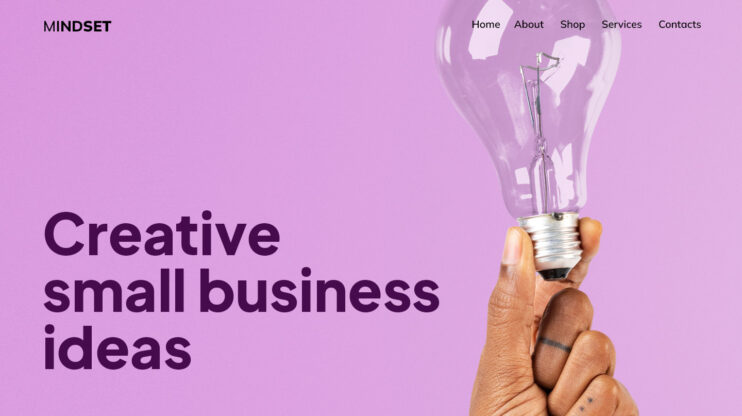Do you want to start a business? No matter the size of the business you want to start, launching your enterprise requires careful financial planning and a thorough understanding of the costs involved. In this article, we’ll discuss the essential budget breakdown for starting a business, covering key aspects like choosing a business model, calculating startup costs, and securing funding.
Starting a business brings exciting chances for innovation and growth, allowing entrepreneurs to create something unique while managing risks. A good budget builds a strong foundation for success while planning helps overcome challenges in the early stages of your business.
FAQ
How much money is usually needed to start a business?
What is the average cost of starting a business?
Is $10,000 enough to start a business?
Is $20,000 enough to start a business?
Determining your business model and expenses
The right business model is key to starting a successful business. You need to learn about various sources of revenue, identify costs, and ensure your profitability.
Assess revenue streams
Identifying potential revenue streams helps you understand how your business will generate income. Consider different methods like product sales, service fees, subscriptions, or advertising. It is important to analyze each source to determine its reliability and potential to sustain the business.
You may want to create a list or table to compare each revenue stream, noting the advantages and drawbacks of each. This will give you insight into which streams might be most reliable and lucrative in the long run. Think of creative ways to diversify revenue to face market changes.
Fixed and variable costs
Knowing your fixed and variable costs helps plan your budget.
- Fixed costs are expenses like rent and salaries. They usually do not change, regardless of production or sales levels.
- Variable costs are expenses such as materials and utilities. They change based on the output level.
It’s useful to make a list of these expenses to get a clear picture of your ongoing financial commitments. An effective strategy for balancing these costs is important. Tracking these expenses helps prevent overspending and leads to better financial forecasting.
Estimate one-time expenses
One-time expenses are those initial costs incurred before your business starts generating revenue. They can include things like business registration fees, licenses, and permits. These vary depending on the industry and location.
Purchasing equipment and furniture also falls under this category. Whether it’s office chairs or machinery, it’s important to list and estimate these costs early.
Marketing and branding costs, like designing a logo or creating a website, should be factored in too. These initial investments add to the setup of a solid business foundation.
Budget for ongoing costs
Ongoing costs are regular expenses needed to keep your business running. These costs include rent, utilities, employee wages, and marketing efforts. Here’s how to budget for them:
- Office or store expenses: Set aside money for rent, mortgage, and utilities (electricity, water, internet).
- Employee wages: Plan for regular staff salaries or freelancer fees if you outsource tasks.
- Marketing and promotions: Budget for ongoing advertising, promotions, and customer retention strategies.
Forecasting these costs will help your business remain financially stable and prepared for long-term operations.
Calculate profit margins
Profit margin is the percentage of revenue that turns into profit after all costs are deducted. Knowing your profit margin helps you see how much money your business can make. Start by calculating both gross and net profit margins for a clearer picture.
Gross profit margin considers revenue minus the cost of goods sold (COGS). If your revenue is $50,000 and your COGS is $30,000, your gross profit margin is calculated as follows:
(Revenue−COGS)/Revenue×100=(50,000−30,000)/50,000×100=40%
Net profit margin takes all expenses into account. If your total expenses (including COGS, operating costs, taxes, etc.) are $45,000, your net profit margin would be:
(Revenue−Total Expenses)/Revenue×100=(50,000−45,000)/50,000×100=10%
Use these figures to assess whether your pricing strategy is effective or needs adjustment. Maximizing profit margin helps ensure your business remains financially healthy and competitive in the market.
Budgeting for business operations
When planning your business operations, two major factors to consider are managing your cash flow and planning for payroll and benefits. These aspects are critical to maintaining a steady operation and ensuring employees are paid timely.
Managing cash flow
Cash flow management is about tracking how much money comes in and goes out of your business. You need to ensure you have enough cash on hand to cover operating expenses like rent, utilities, and supplies. Creating a budget can help you keep track of these expenses.
List your expected income sources like sales and loans. Then, list your expenses and prioritize them. Make sure that essential operating costs come first, so there are no disruptions in your business.
You might also use financial tools and software to predict periods when cash might be low. By preparing for these times, you can avoid cash shortages that could impact your operations.
Planning for payroll and benefits
Payroll expenses are a key part of your business budget. It’s not just about salaries; it includes taxes, benefits, and other related costs. Plan your payroll budget carefully to ensure you meet these obligations.
First, calculate the total number of employees and their expected salaries. Don’t forget to factor in payroll taxes and any benefits such as health insurance or retirement plans.
Another important task is setting up a system for timely payroll disbursements. This might involve using automated payroll software, which helps ensure accuracy and compliance with tax laws. Proper planning can help prevent any payroll-related issues down the line.
Creating a business plan
A well-written business plan helps you determine how much money you need to start and grow your business. It should include thorough market research, competitor analysis, and realistic financial projections, such as estimated startup costs and potential revenue. This plan is like a roadmap to guide your financial decisions and ensure you’re prepared to manage costs effectively from the start.
Conduct market research
Market research involves collecting data about your potential customers and the industry.
- Identify your target market: Determine who is most likely to buy your product or service by considering factors such as age, location, buying habits, etc.
- Gather data: Use methods like surveys, online tools, and customer interviews.
- Analyze key industry trends: Look for local and global trends, demand for your product or service, and gaps in the market that your business can fill.
Conducting thorough market research will help understand how your business can succeed. It aligns your products with customer needs and helps you position your offerings effectively.
Analyze the competitors
Competitor analysis means understanding who your business rivals are and how they operate. Identify companies offering similar products or services, and study their pricing, promotion, and customer reviews. Knowing their strengths and weaknesses helps you position your business better.
Create a list of your main competitors. For each competitor, highlight their market share and customer base. This helps identify what makes them popular and where they might fall short. Use this information to identify opportunities for your business.
With this understanding of your competitors, you can offer something unique to the potential audience. This sets your business apart, creating a competitive edge.
Set the financial projections
Financial projections estimate your startup costs, profits, and cash flow. First, list your startup expenses, like permits, equipment, and marketing. This gives a clear picture of the funds needed to launch your business.
Project your income and profits for the first few years. Include monthly sales targets and other revenue streams. This helps you evaluate the potential growth of your business and its financial health. Using tables can make these projections clearer and easier to understand.
Financial projections are vital for attracting investors and managing your budget. They provide a forecast of your business’s financial future, keeping you on track.
Choose the right business entity for you
The right business entity is crucial as it impacts legal obligations, taxes, and personal asset protection. Common options include sole proprietorship, partnership, LLC, and corporation. Each structure varies in complexity and costs:
- Sole proprietorship: Simple to set up but offers no personal liability protection.
- LLC: Provides personal asset protection and separates business finances, with moderate fees and paperwork.
- Corporation: More complex and costly, but offers benefits like easier access to investment.
Consider your business needs and the level of protection you require when making your choice.
Securing startup funding and investment
Getting funding can help you launch your business successfully. By learning about different sources you can match your needs with the best options. 
Here’s a look at several ways to fund your startup.
Angel investors
Angel investors can be a great source of funding for your startup. These individuals use their own money to invest in early-stage companies. They often put in $25,000 to $100,000.
To find angel investors, start by getting your pitch ready. Make sure it’s clear and fits what the investor likes. Look at their past investments to understand their interests.
You can meet angel investors through your network. Ask friends, family, and other business owners for introductions. Join local startup groups and events too. Many angels are active in their local startup scenes.
When you talk to angel investors, be honest about your startup’s challenges. Don’t make promises you can’t keep. Show them how their money and advice can help your company grow.
| Pros | Cons | Funding maximum | Eligibility |
| Hands-on help | Give up equity | $100,000 | Early-stage startups |
Also, keep in mind that angel investors bring more than just money. They often have useful knowledge and contacts that can help your startup succeed.
Venture capital firms
Venture capital firms invest in startups with high growth potential. They provide funding in exchange for equity in your company. These firms often focus on specific industries or stages of growth.
To secure funding from a VC firm, you need a strong business plan and growth strategy. You’ll pitch your idea to partners at the firm. If they’re interested, they’ll conduct due diligence on your startup.
VC funding can give you access to large amounts of capital. It also brings expertise and connections that can help your business grow. But you’ll give up some control of your company in return.
Not all startups are good candidates for VC funding. It works best for companies with big market opportunities and scalable business models. You should be ready for rapid growth if you take VC money.
| Pros | Cons | Funding Maximum | Eligibility |
| Large capital infusions | Loss of some control | Millions of dollars | High-growth startups |
Crowdfunding platforms
Crowdfunding platforms let you raise money for your startup from many people online. These sites connect you with potential backers who believe in your idea.
- Kickstarter is a popular choice for creative projects and products. You set a funding goal and offer rewards to backers. If you reach your goal, you get the money. If not, backers aren’t charged.
- Indiegogo allows both fixed and flexible funding. With flexible funding, you keep what you raise even if you don’t hit your goal. This can be good for projects with any budget.
- StartEngine focuses on equity crowdfunding. Instead of rewards, you offer backers a stake in your company. This can be a way to find long-term investors.
- GoFundMe works well for personal causes or non-profit ventures. It’s easy to use and lets you start collecting funds right away.
| Platform | Pros | Cons | Funding Maximum | Eligibility |
| Kickstarter | Large backer community | All-or-nothing funding | No limit | Creative projects |
| Indiegogo | Flexible funding option | Higher fees for flexible funding | No limit | Most projects |
| StartEngine | Equity offering | Complex regulations | $5 million per year | U.S. companies |
| GoFundMe | Quick setup | Less suited for businesses | No limit | Most causes |
Startup accelerators
Startup accelerators can give your new business a big boost. These programs offer coaching, resources, and funding to help you grow fast. You’ll join a group of other startups for a few months of intense work.
Y Combinator is a famous accelerator. It has helped over 4,000 startups worth more than $600 billion in total. Techstars is another top choice. They pick 500 startups each year for their 3-month program.
Most accelerators follow a similar process.
- First, you apply and get picked.
- Then you work closely with mentors to improve your business idea and product.
You’ll learn how to pitch to investors and run your company better.
The goal is to get your startup ready for more funding. Accelerators teach you to focus on the problem you’re solving and why your solution is special. They help you show off your team’s skills too.
At the end, you usually present your startup to investors. This “demo day” is your chance to win more money to keep growing.
| Pros | Cons | Funding maximum | Eligibility |
| Expert mentoring | Intense time commitment | $120,000+ | Early-stage startups |
| Networking opportunities | May require relocation | Varies by program | Innovative business ideas |
| Investor connections | Give up equity | Depends on accelerator | Strong founding team |
Government grants
Government grants can help fund your startup. These are free money you don’t need to pay back. Many agencies offer grants for businesses doing research or working on specific problems.
The Small Business Administration (SBA) is a good place to start. They have programs to help new businesses get funding. You can also look for grants from other federal agencies or your state government.
To get a grant, you need a clear plan. Think about how you’ll use the money. Agencies want to know exactly where their funds will go. Make sure your business goals match what the grant is for.
Applying for grants takes time and effort. You’ll need to write a strong proposal. This should explain your project and why it deserves funding. Be ready to show how your work will make a difference.
| Pros | Cons | Funding Maximum | Eligibility |
| Free money | Time-consuming process | Varies by program | Specific to each grant |
| No repayment needed | Tough competition |
Conclusion
To succeed when you start a business you will need to carefully plan the financial aspects. Understanding your costs, creating a budget, and exploring different funding options, you can set your business up for success. Although it may seem overwhelming, good planning helps reduce risks and supports your growth. Whether you’re getting funds from investors, crowdfunding, or government grants, you should make sure your finances match your goals. With the right budget in place, you can overcome challenges and turn your ideas into reality.
Looking to sell online? Develop and launch your store with 10Web AI Ecommerce Website Builder.
Create your online store in minutes!










